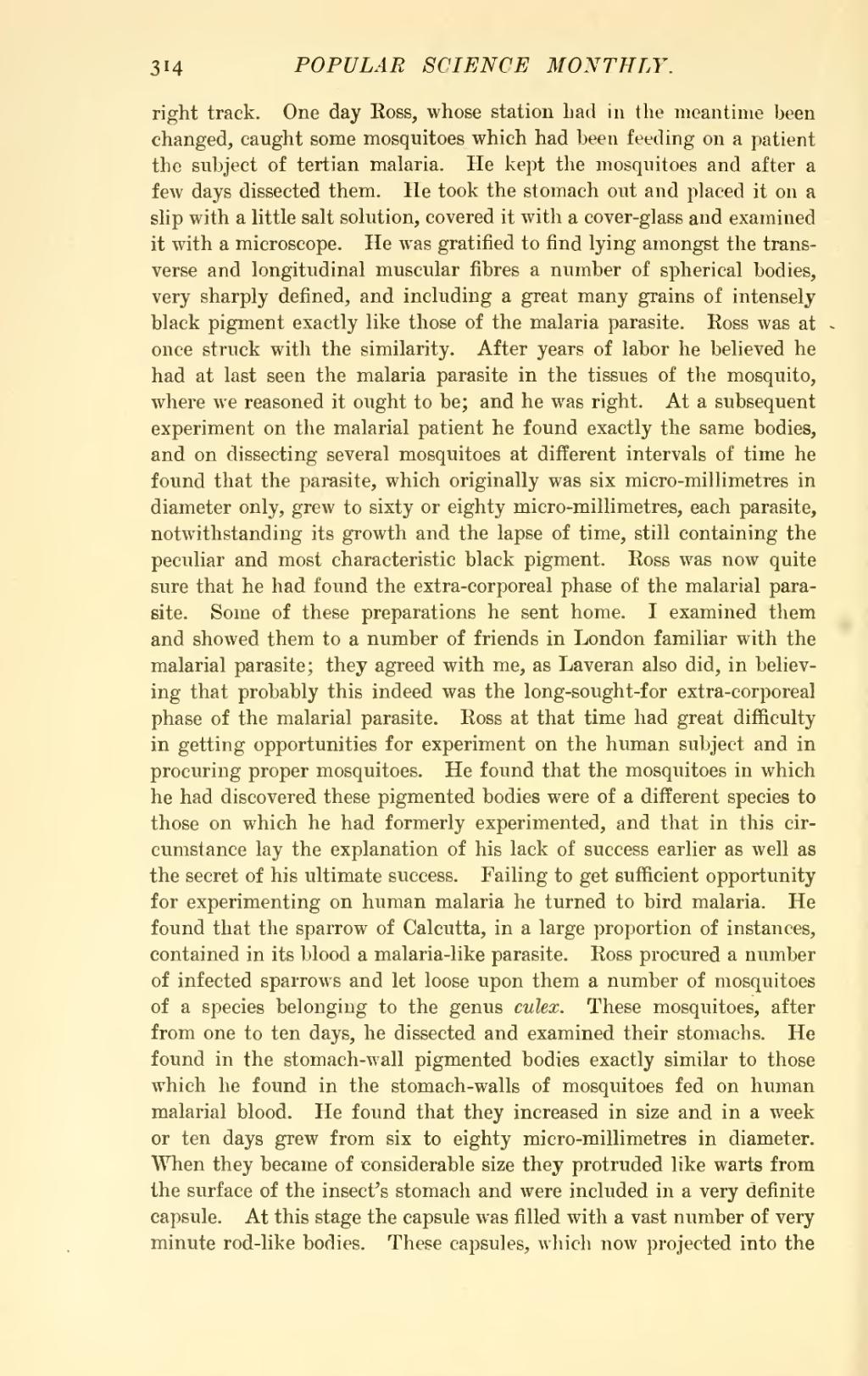right track. One day Ross, whose station had in the meantime been changed, caught some mosquitoes which had been feeding on a patient the subject of tertian malaria. He kept the mosquitoes and after a few days dissected them. He took the stomach out and placed it on a slip with a little salt solution, covered it with a cover-glass and examined it with a microscope. He was gratified to find lying amongst the transverse and longitudinal muscular fibres a number of spherical bodies, very sharply defined, and including a great many grains of intensely black pigment exactly like those of the malaria parasite. Eoss was at once struck with the similarity. After years of labor he believed he had at last seen the malaria parasite in the tissues of the mosquito, where we reasoned it ought to be; and he was right. At a subsequent experiment on the malarial patient he found exactly the same bodies, and on dissecting several mosquitoes at different intervals of time he found that the parasite, which originally was six micro-millimetres in diameter only, grew to sixty or eighty micro-millimetres, each parasite, notwithstanding its growth and the lapse of time, still containing the peculiar and most characteristic black pigment. Ross was now quite sure that he had found the extra-corporeal phase of the malarial parasite. Some of these preparations he sent home. I examined them and showed them to a number of friends in London familiar with the malarial parasite; they agreed with me, as Laveran also did, in believing that probably this indeed was the long-sought-for extra-corporeal phase of the malarial parasite. Ross at that time had great difficulty in getting opportunities for experiment on the human subject and in procuring proper mosquitoes. He found that the mosquitoes in which he had discovered these pigmented bodies were of a different species to those on which he had formerly experimented, and that in this circumstance lay the explanation of his lack of success earlier as well as the secret of his ultimate success. Failing to get sufficient opportunity for experimenting on human malaria he turned to bird malaria. He found that the sparrow of Calcutta, in a large proportion of instances, contained in its blood a malaria-like parasite. Ross procured a number of infected sparrows and let loose upon them a number of mosquitoes of a species belonging to the genus culex. These mosquitoes, after from one to ten days, he dissected and examined their stomachs. He found in the stomach-wall pigmented bodies exactly similar to those which he found in the stomach-walls of mosquitoes fed on human malarial blood. He found that they increased in size and in a week or ten days grew from six to eighty micro-millimetres in diameter. When they became of considerable size they protruded like warts from the surface of the insect's stomach and were included in a very definite capsule. At this stage the capsule was filled with a vast number of very minute rod-like bodies. These capsules, which now projected into the
Page:Popular Science Monthly Volume 57.djvu/324
314
POPULAR SCIENCE MONTHLY.
